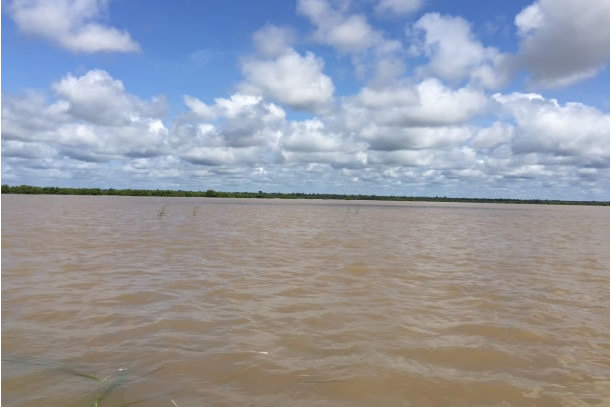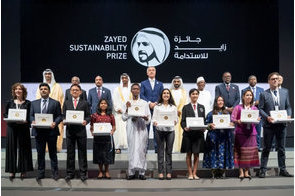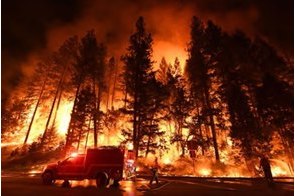PPP to help enhance Africa's climate resilience

Summary
Investment in hydromet services is said to be smart investment that has a fivefold or greater returns, with significant environmental and developmental impacts.
One of the key outcomes of the 22nd session of the Conference of the Parties (COP 22) to the United Nations Framework Convention on Climate Change (UNFCCC) – which held last month in Marrakech, Morocco – was the launch of the United Nations Development Programme (UNDP) report on a new vision for the delivery of effective weather and climate information services across sub-Saharan Africa (SSA). Weather and climate services include the entire value chain of data collection, analysis and distribution of reliable weather, water and climate information, which is central to building resilience to climate change.
Sub-Saharan Africa faces development challenges, perhaps greater than any other region, according to the UNDP. Some of the challenges in the region include paucity of infrastructure, poor energy access, rapid population growth, and low rates of agriculture productivity. The region is vulnerable to hydrological and meteorological (hydromet) hazards such as storms, floods, droughts, among others. Hydromet hazards are responsible for nearly 80% of disasters and over 50% of disaster-related deaths globally from 1980 and 2011, according to World Bank data.
Hydromet services detect weather patterns and provide timely warnings, which are essential to mitigate the adverse impacts of these hazards. The World Bank says lack of technical capacity and delivery capability needed to provide effective hydromet services are key challenges in many developing countries. In SSA, most of the services in individual countries are unable to meet weather, water and climate monitoring and forecasting needs. For this reason, it has become critical for African governments to find more effective ways to formulate enabling policies, deploy modern hydrometeorological observing and forecasting technologies, strengthen the capacities of their National HydroMeteo-rological Services (NHMSes) and build partnerships with the private sector.
The report was produced by the UNDP's Programme on Climate Information for Resilient Development in Africa (CIRDA). The four-year programme through which the UNDP is supporting 11 least developed countries has $50 million funding from the Global Environment Facility (GEF). The UNDP supports developing countries to access financing for climate change adaptation. The investments are made across the information value chain – from building and strengthening observation networks, developing risk-related and tailored products, improving communica-tions and information sharing, to building services for communities, and helping policymakers and businesses to know how to use weather and climate-related information.
Addressing challenges
The Intergovernmental Panel on Climate Change identifies Africa as the region that is most vulnerable to climate change, although the continent has contributed the least to human-induced global warming. About 650 million people in SSA live in arid or semi-arid areas where floods and droughts have an impact on lives and productivity. The effects of climate change are projected to reduce agricultural yield in the region by as much as 50% and a drop in net crop revenues by up to 90% by 2100. This is an enormous threat to lives in a region where one in four is already undernourished (International Food Policy Research Institute).
Citing a joint study from the World Meteorological Organization and the Centre for Research on the Epidemiology of Disasters, the UNDP says there were 1,319 reported weather-related disasters in Africa from 1970 to 2012 that led to the loss of 698,380 lives and economic damages of $26.6 billion. Given these negative tolls, failure to accurately provide warnings on fast-acting storms and other extreme climate events will not only take more lives, but it will also hinder economic development.
SSA countries like Nigeria, Sierra Leone, South Sudan, Chad, Ethiopia, the Central African Republic, and Eritrea that are among the top 10 on the Climate Change Vulnerability Index (CCVI) 2015 – as produced by Maplecroft, the United Kingdom-based risk analytics firm – have an urgent need to strengthen their climate and weather information services.
New Approach
The report looks at a new approach by which countries in the SSA region can leverage advances in technologies, build public-private partnerships and attract investments in the weather and climate services sector. The new technologies described in the report include low-cost All-in-One Automatic Weather Stations (AWS), lightning location sensors, automatic water level and stream gages, and central automated systems for data collection, integration and analysis. These weather and climate monitoring, analysis and forecasting technologies will be supported by the existing infrastructure in the telecommunication sector. Real-time communication is critical for delivery of data to central meteorological offices and from weather stations to users across communities.
The vision of the CIRDA programme takes a comprehensive approach to weather and climate information management in order to assist in long-term planning and decision-making. But beyond collection, analysis, and distribution of real-time data – which is valuable for short-term-weather and long-term-climate forecasts – timely communication of warnings can reduce the impact of storms, lightning and other extreme weather events. The innovative technologies and business models described in the report will support climate adaptation goals of African countries.
An important technological framework that is helping to mitigate the hazards of lightning and save lives is the African Centres for Lightning and Electromagnetics Network (ACLENet). Established in 2013, ACLENet has deployed lightning sensors in East African communities where an estimated 5,000 people die each year due to erratic weather. The project is supported by the United States-based Earth Networks, which operates the world's largest weather observation and lightning detection networks.
Opportunities
Investment in hydromet services is said to be smart investment that has a fivefold or greater returns, with significant environmental and developmental impacts. While policymakers can use the information to build National Adaptation Plans to withstand the risks of changing climate, private sector enterprises can use information services to develop their own climate adaptation strategies.
With increasing interest in sustainable investing in the private sector, the report shows that a number of sectors, such as aviation, banking, energy, insurance, telecommunications and agriculture are willing to pay for high-quality weather and climate information products. To provide these products, the UNDP suggests NHMSes engage with private sector weather service providers and establish revenue-sharing agreements. Bonizella Biagini, Programme Manager for UNDP's Programme on Climate Information for Resilient Development in Africa, said, “Substantial market dynamics are stimulating our partner countries to redefine the way they think about climate and weather services.”
At the community level, village leaders can develop climate-resilient strategies to improve local enterprises and protect vulnerable farmers. With better information on impending weather events and likely characteristics of the upcoming season, together with actionable information on how to plan and what to do in each case, farmers can increase agriculture production and lower risk. Increasing farm yield will improve incomes of farmers and enhance their wellbeing.
As access to technology and improvement in weather and climate information services in African countries help to build resilience to climate change, the report highlights potential sectorial benefits. For instance, with improved information, NHMSes will be able to provide advisories on malaria and other disease outbreaks. The construction industry can improve its risk control systems and eliminate construction problems. For the aviation sector, fuel consumption can be reduced through better route planning; flight scheduling in the sector can also improve with better hydromet services, among other benefits. Fuel savings is a benefit that can also accrue to the maritime sector, apart from reduction of accidents and more efficient rescue operations.
African leaders were among the world leaders in Marrakech to advance discussions on the Paris Climate Agreement reached at COP 21 last year on the need for countries to reduce greenhouse gas emissions and limit the planet's temperature rise below 2 degrees Celsius by the end of this century. The UNDP said commitment and leadership among African leaders are required to create effective public-private partnerships as well as the conducive regulatory framework and business environment where the private sector can play a key role in addressing the continent's challenges.
Martins Hile is Executive Editor, Financial Nigeria publications
Related
-
Paris climate agreement creates $23 trillion investment opportunities in emerging markets – IFC
SSA represents a $783 million opportunity – particularly for clean energy in Cote d’Ivoire, Kenya, Nigeria, and ...
-
UAE's global sustainability award opens for submission of entries
Winners in each category will receive $600,000 in prize funds to develop and enhance their existing sustainability ...
-
Avoiding a climate lockdown
Global warming will cause drinking water to degrade and enable pollution-linked respiratory diseases to thrive.










